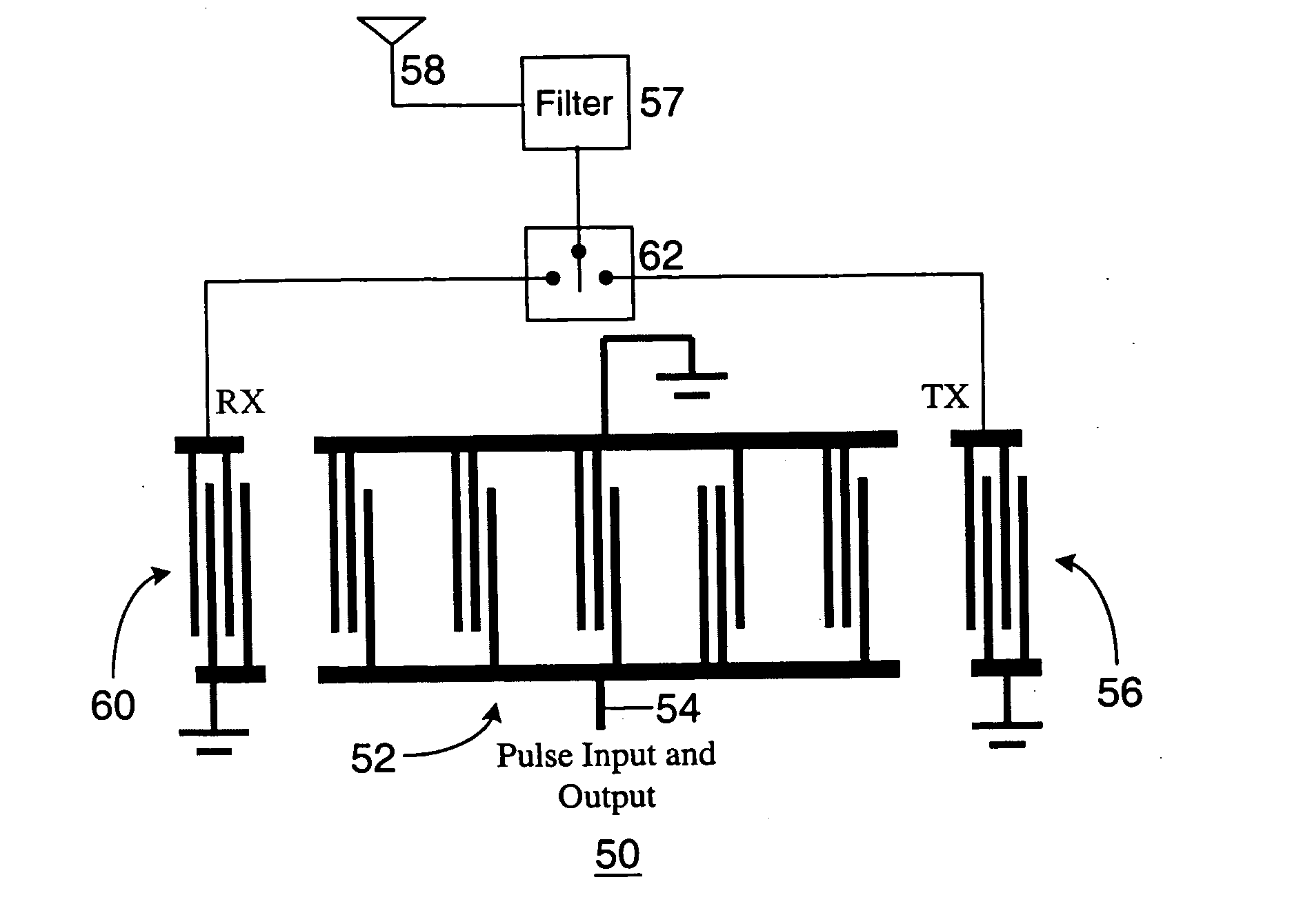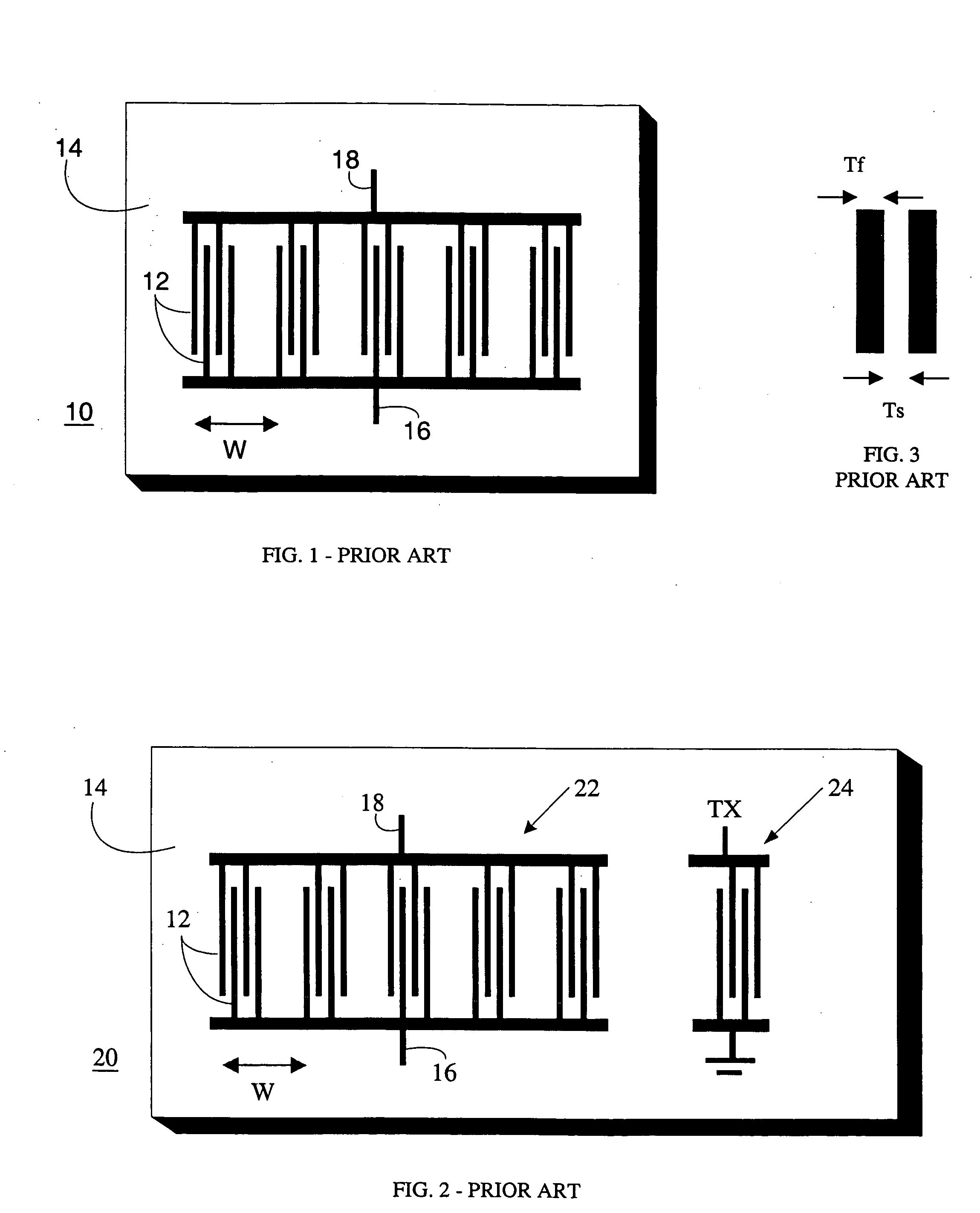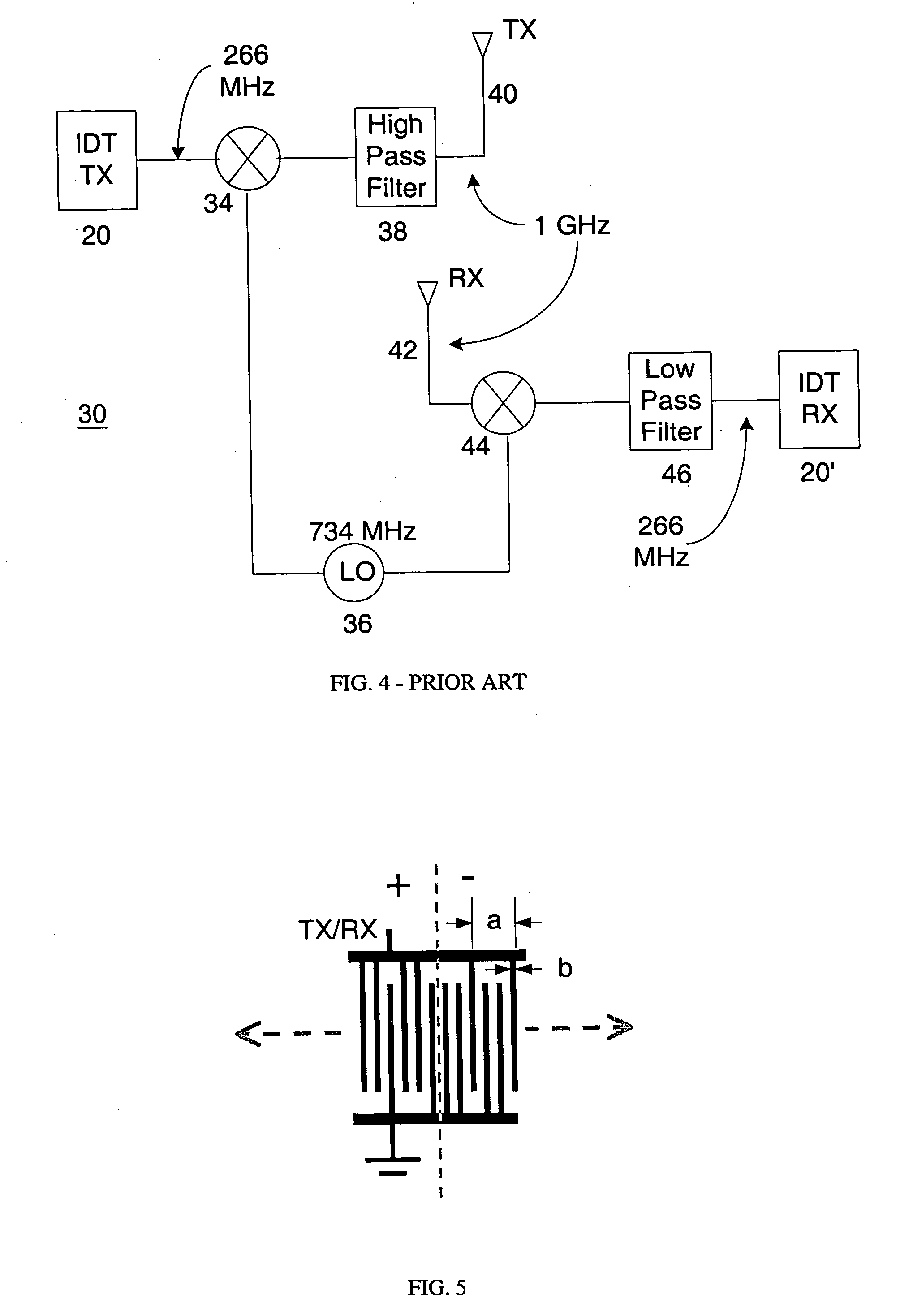Wireless communication system using surface acoustic wave (SAW) second harmonic techniques
a communication system and surface acoustic wave technology, applied in the direction of instrumentation, device material selection, device details, etc., can solve the problem that the cost of a semiconductor bluetooth solution may exceed $10.00, and achieve the effect of low cost, cost reduction, and easy manufacturing
- Summary
- Abstract
- Description
- Claims
- Application Information
AI Technical Summary
Benefits of technology
Problems solved by technology
Method used
Image
Examples
second embodiment
[0060] the invention as shown in FIG. 9 eliminates the antenna switches and the problems associated therewith. According to the second embodiment, the SAW-based communication system 70 has an expander IDT 52a and a compressor IDT 52b. A pulse representing data input at terminal 54 is converted to a coded SAW by expander IDT 52a. Transmit IDT 56 then converts the resultant coded SAW into an electrical signal for transmission via band pass filter 57 and antenna 58. Feedback of the transmit signal to the RX IDT 60 does not interfere with the IDT 52a in the transmit module 80a. Pulse output 54b is not read during signal transmission to prevent erroneous data detection. A signal received at antenna 58 is filtered by band pass filter 57, input to RX IDT 60, converted to a SAW and decoded by autocorrelation in compressor IDT 52b provided the received signal code corresponds to the coding of IDT 52b. The autocorrelation peak is output at terminal 54b. Although the received signal is split b...
third embodiment
[0067] In the invention, the second harmonic design techniques discussed above are applied to passive SAW RF systems. In such systems, SAW devices usually perform only as RF expanders. As shown in FIG. 12, such a passive system 120 may comprise two IDTs 122 and 124. IDT 124 is fabricated according to fundamental frequency criteria, whereas IDT 122 operates at a harmonic of the fundamental, as discussed above. A pulse that has been sent out by a local requesting unit is received at the antenna 128 and excites IDT 122 to produce an acoustic wave. This wave then propagates to a coded IDT 124 that has a suitable termination 126 connected across its terminals 132 and 134 to produce a reflection coefficient of magnitude 1. Termination 126 could be an open or short circuit termination, which will re-excite the coded IDT 124 to produce a coded acoustic wave back to the IDT 122 that is connected to the antenna 128. The result is that an impulse sent out by a local requesting unit excites a c...
PUM
 Login to View More
Login to View More Abstract
Description
Claims
Application Information
 Login to View More
Login to View More - R&D
- Intellectual Property
- Life Sciences
- Materials
- Tech Scout
- Unparalleled Data Quality
- Higher Quality Content
- 60% Fewer Hallucinations
Browse by: Latest US Patents, China's latest patents, Technical Efficacy Thesaurus, Application Domain, Technology Topic, Popular Technical Reports.
© 2025 PatSnap. All rights reserved.Legal|Privacy policy|Modern Slavery Act Transparency Statement|Sitemap|About US| Contact US: help@patsnap.com



